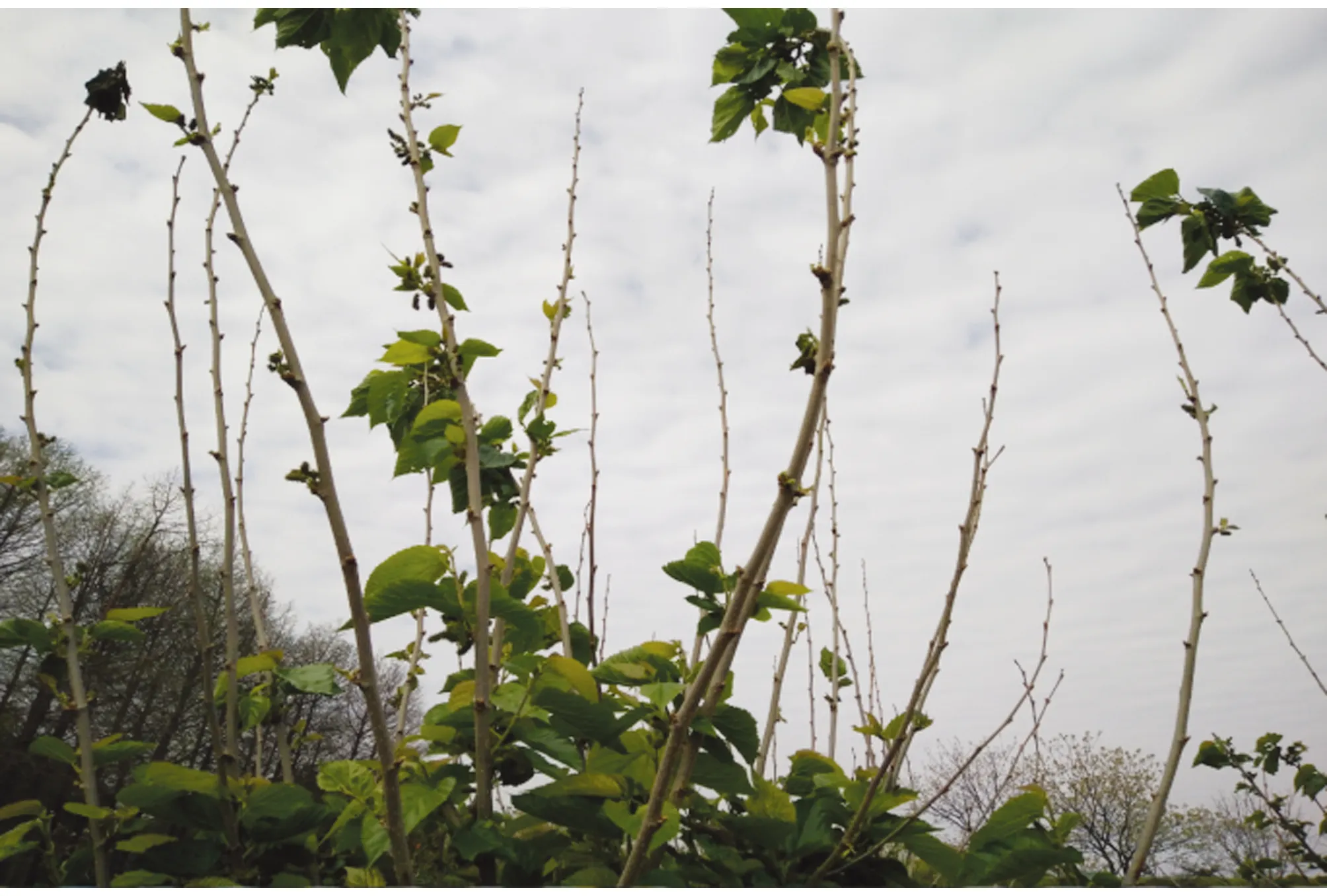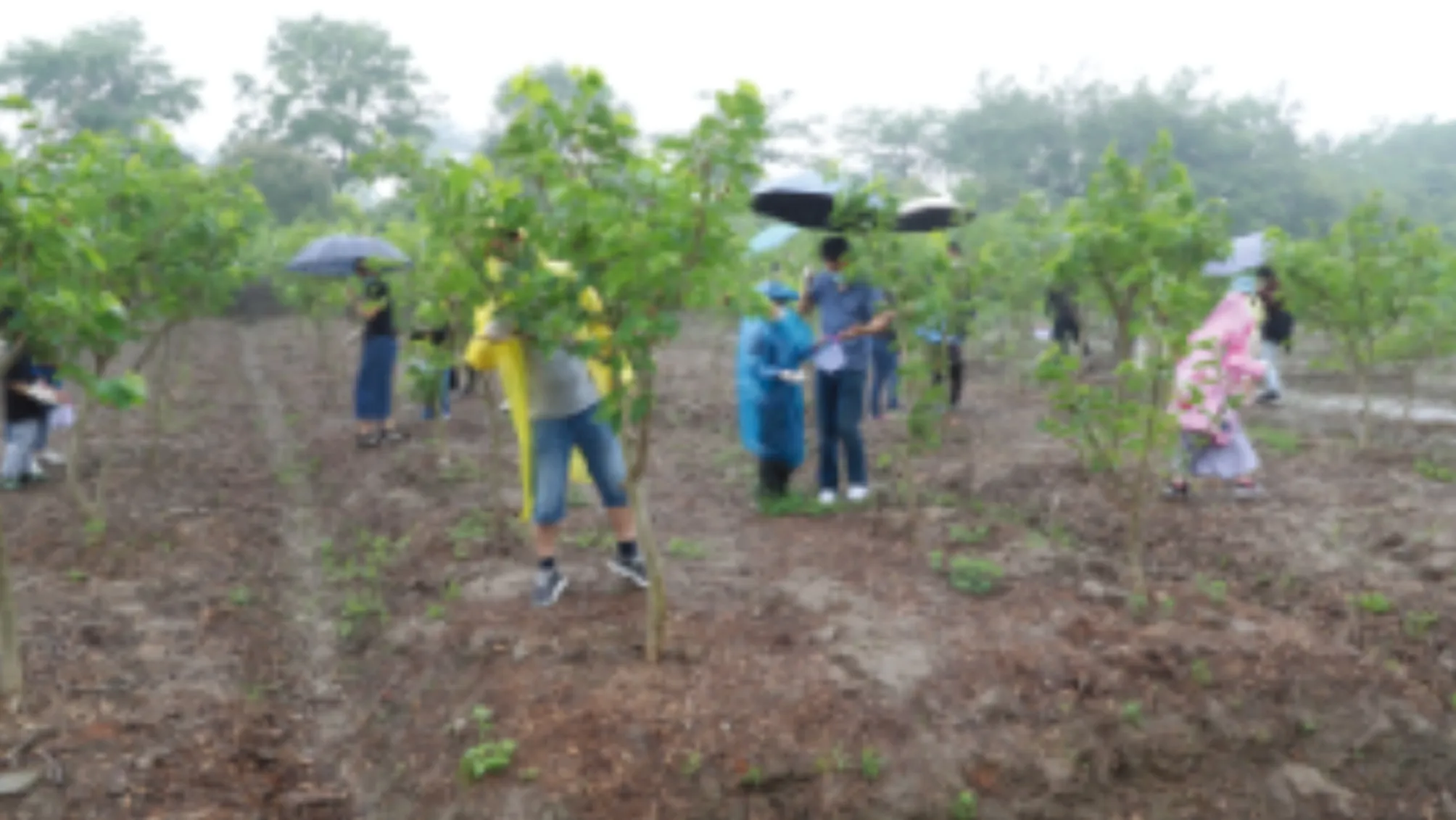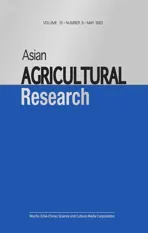Flower Characteristics and Resource Evaluation of Fruit Mulberry
2023-06-27LianjunWANG
Lianjun WANG
Shanghai Chenshan Botanical Garden, Shanghai 201602, China
Abstract [Objectives] In order to study the flower characteristics of mulberry and evaluate the resources of fruit mulberry. [Methods] Firstly, the resources of fruit mulberry were collected, and four varieties of fruit mulberry (‘Dashi’ mulberry, ‘Changguo’ milk mulberry, ‘agate’ mulberry and ‘Xiangjin’ milk mulberry) were collected. Then, the flower characteristics, fruit quality, and adaptability of fruit mulberry were studied. [Results] Mulberry is a dioecious plant, and the inflorescences are lurocatkin. The male flowers will fall off automatically, while the female flowers will develop into fruit. The four varieties of fruit mulberry have good adaptability in Shanghai, and their fruits have their own characteristics. At the same time, in order to use the resources of fruit mulberry, mulberry fruit picking activities were carried out for many times. [Conclusions] This study provides a reference for the cultivation, collection, utilization and evaluation of mulberry.
Key words Fruit mulberry, Flower characteristics, Adaptability, Picking
1 Introduction
Mulberry (MorusalbaL.), a large deciduous shrub or tree ofMorus, Moraceae, is native to China. As an important species of fruit trees, mulberry has a history of thousands of years, plays an important role in botanical gardens, and has an important impact on human life. Fruit mulberry is mainly used to fruit, and its leaves and fruit can be used.
Mulberry has important edible and medicinal value. Mulberry can promote digestion and help defecation, and has auxiliary effect on the treatment of coronary heart disease, hypertension, neurasthenia,etc.At the same time, mulberry leaves are important food for silkworm babies.
At present, many studies on fruit mulberry have been carried out[1-19], and most researches mainly focus on the investigation of germplasm resources, variety collection, cultivation techniques, application and breeding of new varieties of mulberry. However, there are few studies on adaptability. This study can provide a reference for the cultivation, collection, utilization and evaluation of mulberry.
2 Materials and methods
2.1 Collection of test materialsFruit mulberry was chosen as the test material, and a variety of methods were used to collect mulberry resources. In addition to the traditional purchasing method, the collection methods also included peer exchange and field introduction. Introducing sites included Zhejiang, Anhui, Shanghai and other places.
2.2 Test site and test methodThe mulberry special area of Shanghai Chenshan Botanical Garden was as a test site, and was located in the east of the garden. Field observation, photo recording,etc.were adopted.
2.3 Fruit quality and cold tolerance of mulberryThe cold tolerance of mulberry was judged by observation and study from 2019 to 2021. The quality of mulberry fruit was judged by the taste of tourists during the picking activity.
2.4 Data processingThe test data were processed by Excel software.
3 Results and analysis
3.1 Flowering phase of fruit mulberryIn Shanghai, the leaf buds of mulberry begin to germinate in mid-late February, forming broad ovate or ovate leaves. It is a deciduous tree. Its roots are well developed and grow fast. Through various methods of introduction, the mulberry resources in Shanghai Chenshan Botanical Garden currently cover 4 varieties, including ‘Dashi’ mulberry, ‘Changguo’ milk mulberry, ‘agate’ mulberry and ‘Xiangjin’ milk mulberry. Mulberry is a dioecious plant. In Fig.1, the left one is male, while the right one is female, and the inflorescences are lurocatkin. The flowers are axillary, germinating almost at the same time as the leaves, in which the male inflorescences are obviously pendulous and will soon fall off and wither. Female inflorescences are sessile and have a 2-lobed stigma, and there is a papilla on the inner surface.

Fig.1 Inflorescences of fruit mulberry
3.2 Adaptability of fruit mulberryMulberry has good adaptability in Shanghai, and grows fast and healthily. The period from June to July is the plum rain season in Shanghai, with high rainfall and hot and humid climate. These four varieties of fruit mulberry have good heat and water resistance, and few plants died. In terms of cold tolerance, there was no frost damage in these four varieties in 2019 and 2021. In the winter of 2020, Shanghai ushered in a cold wave. At night, the temperature in the urban area ranged from -3 to -5 ℃, and the temperature in the suburbs varied from -5 to -8 ℃ for several days. As a result, all the four varieties of fruit mulberry suffered a certain degree of freezing damage, especially the upper branches (Fig.2).

Fig.2 Fruit mulberry suffering freezing damage
3.3 Quality of mulberry fruitThe four varieties of fruit mulberry (‘Dashi’ mulberry, ‘Changguo’ milk mulberry, ‘agate’ mulberry and ‘Xiangjin’ milk mulberry) have their own characteristics. Among them, the fruit of ‘Dashi’ mulberry ripens earlier in late April. The fruit is green before ripening, gradually turning red, and finally turning black purple. The variety bears many fruits and has a large yield of fruits. The fruit of ‘Changguo’ milk mulberry is long. It is green before ripening, and gradually turns reddish purple. The variety has high sweetness and an excellent taste. The fruit of ‘agate’ mulberry is cylindrical, and is closer to ‘Dashi’ mulberry in shape. ‘Xiangjin’ milk mulberry tastes better, and is ripe in early May.
3.4 Picking activities of fruit mulberryAt present, more than 200 mulberry trees have been collected from Shanghai Chenshan Botanical Garden. After collecting these mulberry resources, the botanical garden should gradually develop their value. Currently, the garden has carried out mulberry picking activities 6 times, including the summer camp of Chenshan Wonder Night, parent-child picking activities, union picking activities,etc., so that different people, especially school children, can get the experience of mulberry picking in the international metropolis, which is very conducive to the growth of children (Fig.3).

Fig.3 Picking activities of fruit mulberry
4 Discussion
The fruit quality and yield of fruit mulberry are closely related to the level of conservation and management. For instance, the pruning of fruit mulberry can affect the yield. After the harvest of the fruit, fruit mulberry should be pruned moderately in winter,
including the removal of tillering branches, pruning of bare long branches, thinning of dense branches and so on. For example, in the high-temperature period from July to August, timely watering has a great impact on the quantity and quality of mulberry fruits. In winter, after fruit mulberry leaves, organic manure (mainly cow manure) should be applied once in December. In the flowering and fruiting periods, compound fertilizer should be applied, which also has an important impact on the yield of fruit mulberry. In addition, the pests and diseases of fruit mulberry should also be promptly controlled, such as common snail and fungal diseases, otherwise they will cause rotten fruit and even a reduction in fruit yield.
Besides, the planting environment of fruit mulberry will also have a big impact on fruit yield. In the botanical garden, due to the obvious artificial protection effect, there are many small animals, such as birds and squirrels. Whenever fruit mulberry ripens, it will be patronized by these small animals, and the fruit still has a certain loss even if the fruit is bagged or anti-bird nets are used.
杂志排行
Asian Agricultural Research的其它文章
- Construction of Industrialization Development Model for "1+4+X" Community-Based Elderly Care in Gannan Old Revolutionary Base Area in the Context of Population Aging
- Preparation of Biomanganese Oxide-biochar Composite and Its Remediation of Arsenic Contamination
- Amplification and Bioinformatics Analysis of vscN Gene from Vibrio alginolyticus
